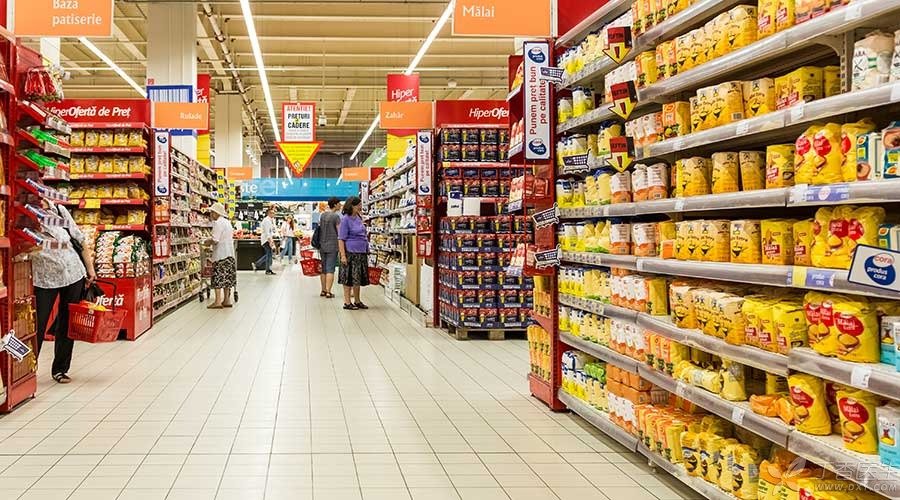
Do you know how much energy you consume after drinking a bottle of Coke?
When you go to the supermarket to buy snacks, besides pursuing taste, do you care about the fat and sodium content contained in them?
If you want to lose weight and don’t eat dinner, you can’t help eating a few bags of snacks, but do you know that the energy of these snacks may be higher than that of a main meal?
Now when supermarkets buy food, almost all packaged foods will have a table called “Nutrition Composition Table”. By looking at this table, we can understand the calories and approximate nutritional value of food.
What is [nutritional composition table]?
According to China’s relevant laws and regulations, from January 1, 2013, all prepackaged foods must be labeled with nutrition information when leaving the factory.
Nutritional Composition Table
It is a description on the label of the main nutritional ingredients of this food, which should at least include the energy (commonly known as calories and calories), protein, fat, carbohydrate and sodium content of the food, as well as their nutrient reference value% (NRV%).
Protein, fat, carbohydrate and sodium are the four substances that we call [core nutrients] because they have a great impact on human health. Together with energy value, they belong to the contents that must be marked on the nutrition composition table according to national regulations.
In addition, food manufacturers can also choose whether to label other nutritional ingredients, such as vitamins, minerals, dietary fiber, etc.
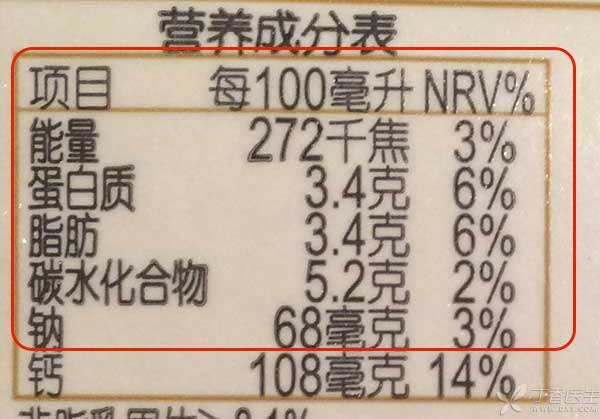
Why should we care about the nutritional composition table?
Some people may think that I have normal weight and don’t want to lose weight. I don’t need to care about the nutrition table.
Food affects not only body weight, but also the overall health level and the risk of various chronic diseases.
For example, excess energy will lead to obesity, and excessive sodium (salt) intake will significantly increase the risk of hypertension. Fat intake, especially trans fat intake, is related to cardiovascular diseases…
Therefore, in short, the nutrition composition table is used to help consumers to choose food reasonably and eat a balanced diet, thus reducing the risk of various chronic diseases.
The nutritional composition table depends on 1 + 4
The energy value, together with the four core nutrients (protein, fat, carbohydrate and sodium), belongs to the contents that must be marked on the nutrition composition table stipulated by the state.
Energy
In addition to satisfying the appetite, we eat in order to obtain energy from it to meet the needs of growth, development and life activities.
The energy needed by the human body comes from carbohydrates, fats and proteins in food. Proper energy and nutrition can keep us in good health, but if we eat too much energy, it will be stored in the body, forming fat, leading to obesity and increasing the risk of various metabolic diseases.
What needs to be reminded is that in our country, the energy value on the nutrition composition table is only allowed to use kilojoules as the unit, so we should be careful not to confuse it with the [kilojoules, large calories] commonly used in our life.
Kilocalories, large calories and kilojoules are all units of heat. They can be converted according to the following formula:
1 kcal = 1 kcal = 4.184 kJ
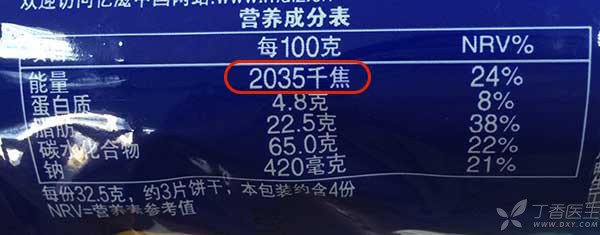
Protein
Protein is an essential nutrient for human body, and many important physiological functions need protein to complete.
If the protein in the diet is insufficient, it may lead to malnutrition and decreased body resistance, especially for children in the growth and development period, the negative impact is especially obvious.
However, the more protein, the better. Excessive protein will increase the burden on the liver and, in severe cases, lead to ketoacidosis and liver and kidney injury.
Therefore, people need to take in a proper amount of protein every day. The Chinese Nutrition Society suggests that adult men who do light physical work need about 65 grams of protein every day.
Fat
When it comes to fat, many people turn pale at the mention of oil. In fact, fat is not only an important source of energy needed by the human body, but also an important component of human organs and tissues. Therefore, even when losing weight, one should not completely refuse to eat fat.
However, as the energy supply capacity of fat is more than twice that of carbohydrate (1 gram of fat can provide 9 calories of energy, while 1 gram of carbohydrate can only provide 4 calories of energy), and excessive fat intake will increase the risk of cardiovascular and cerebrovascular diseases.
Not only fat meat, edible oil is fat, and the crisp and fragrant taste of many snacks and snacks is attributed to fat. High-fat foods often eat a lot unconsciously, and the [fat] content in the nutritional composition table needs to be paid attention to.
Carbohydrate
Carbohydrates are the main source of energy for the human body. In our country’s diet, 60% of the energy needed every day is provided by carbohydrates in food.
Carbohydrate in food, in addition to starch in staple foods such as rice and steamed bread, special attention should be paid to the addition of refined sugar, such as cola and white granulated sugar in dessert.
Sodium
The main source of sodium in food is salt, and the chemical composition of salt is sodium chloride. Eating too much salt will significantly increase the risk of hypertension. Therefore, China’s dietary guidelines recommend that the daily salt intake should not exceed 6 grams (2 400 milligrams of sodium), while WHO recommends that the daily salt intake should not exceed 5 grams (2 000 milligrams of sodium).
Many foods in supermarkets are large salt-containing foods, such as instant noodles, potato chips and even non-salty bread, which contain a lot of sodium. With the nutritional composition table, the sodium content in foods must be honestly marked.
Nutrient Reference Value% (NRV%)
Nutrient Reference Value% (NRV%) refers to the percentage of energy or nutrient components to the corresponding Nutrient Reference Value (NRV). The nutrient reference value here can be understood as the reasonable intake of energy and nutrients per day.
With this NRV%, we can know the approximate level of nutrients provided by this food in a day’s demand.
For example, a pack of 100 g biscuits has a calorie of 2,000 kJ. If you look at this figure roughly, people may not have a definite concept, but if you look at NRV%, it is 24%, which means that if you eat a pack of such biscuits, a quarter of the calories will be eaten on this day.
A good helper in selecting food.
Don’t underestimate the nutrition list, it is a good helper when we choose food.
Dieters
If you want to lose weight, you can pay more attention to the NRV% value of [energy] and [fat] when choosing food.
For example, when purchasing biscuits, the energy NRV% of biscuit A is 27%, and the energy NRV% of biscuit B is 24%. It is clear which one to choose.
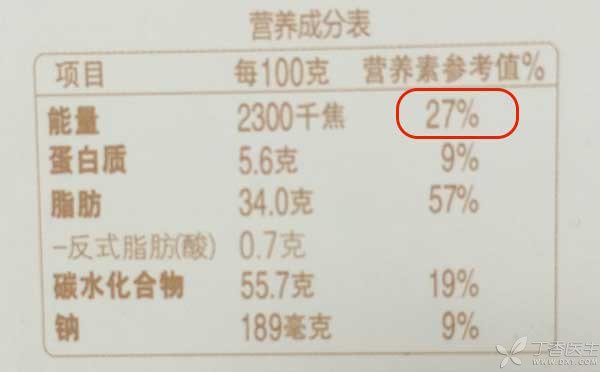
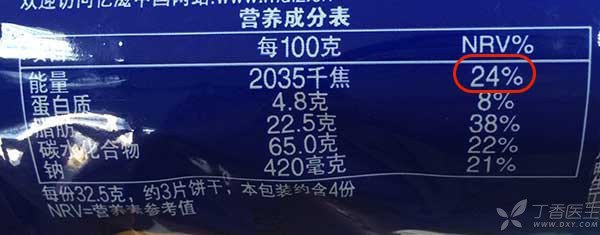
Moreover, the nutrition list can also help you not to give up your favorite food completely when losing weight, even if it is not so healthy.
For example, if you can’t resist the temptation of dessert cake, then accept it frankly. Although the fat and energy values of dessert are not low, as long as you pay attention to the nutritional composition table, know fairly well the energy and fat you eat, and appropriately reduce the intake of other high-calorie foods during the day, dessert can also be a good friend when losing weight.
The nutritional composition table enables consumers to have a general understanding of the nutritional value of food before eating, thus affecting the behavior of buying food and planning their meals more reasonably.
Children
Supermarkets are full of milk drinks, and many people often buy milk drinks for their children as milk.
When drink occasionally drink problem is not big, but milk beverage protein, calcium content is far lower than milk, yogurt, if only drink milk beverage for a long time, will affect the growth and development of children. At this time, you can rely on the nutritional composition table to distinguish the two.
The protein content in milk-containing beverages is generally 0.8 ~ 1.2 g/100g, while the protein content of pure milk can reach more than 2.9 g/100g. Just look at the [protein] column in the nutrition composition table to know the authenticity of milk.
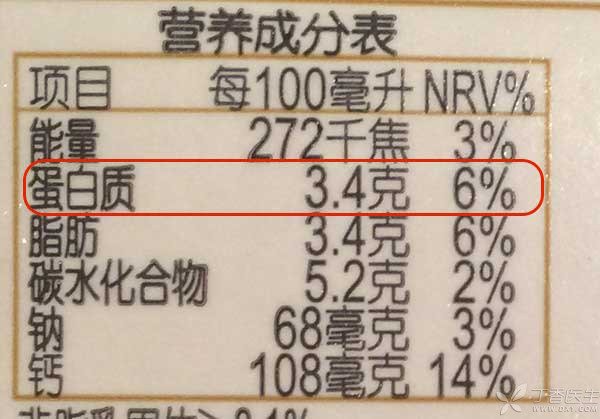
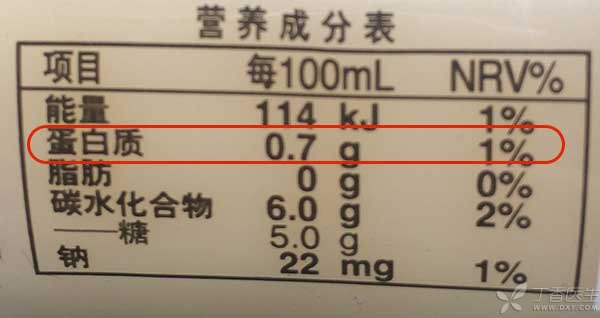
Hypertensive population
People with hypertension need to pay special attention to the intake of sodium in their diet. Apart from salt used in daily cooking, many snacks are the hardest hit areas of sodium.
If you look at the nutritional composition table, you will know that the NRV% of sodium in a pack of instant noodles is generally above 95%, which is almost equivalent to the total amount of salt you can eat in a day. People who still regard instant noodles as a necessity at home should think twice before buying them.
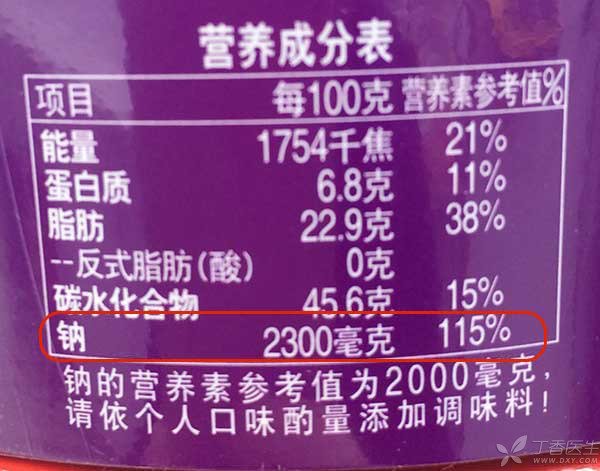
Diabetics
Diabetics should pay special attention to the carbohydrate content in food. In particular, some so-called [sugar-free] foods, because of the [sugar-free] logo, diabetics often think they can eat casually, but in fact the carbohydrate content in the nutrition list is not very large.
For example, many sugar-free moon cakes during the Mid-Autumn Festival are only [sucrose-free]. Lotus seeds and beans are used as moon cake fillings and flour is used as moon cake skins, which all contain carbohydrates and can be converted into glucose, thus raising blood sugar.
Be careful of the business’s problems
At present, many businesses are playing tricks on the nutrition list in an attempt to make unhealthy food look pleasing to the eye.
For example, potato chips that many people love often do not mark nutrition data by 100 g, but use [each copy] to confuse the public. The specific [each copy] is determined by the merchants themselves. Therefore, on the packaging of potato chips, the data seen are generally like this:
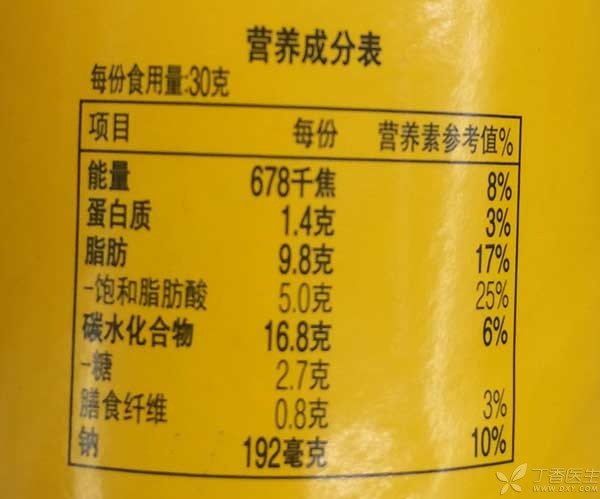
At first glance, the calorie is only 680kJ, which seems not high, and NRV% is only 8%, but this is only 30 g of data. The common boxed potato chips in supermarkets are above 100 g, and the minimum package is 45 g. Eating a box of potato chips means eating 27% of the energy and 60% of the fat needed for a day.
How much you eat is more important.
The most typical example is Coke. The nutrition list of Coke usually says 189 kJ of 100 ml calories, with an NRV% of only 4%, which seems to be a healthy choice with low calories.
However, in fact, a 500 ml bottle of Coke was drunk casually, and there was no feeling of satiety after drinking it (this is well understood, drinking Coke during dinner will not make you eat less), while your body has already taken in 1,000 kJ of calories, and 20% of the calories in a day are gone.
Trans fatty acid: [0] does not mean no
Due to the notorious negative effects of trans fatty acids on health, especially cardiovascular health, the relevant laws and regulations of our country explicitly require that if hydrogenated or partially hydrogenated oil is added to food in the production process, the trans fatty acid content should also be marked on the nutritional composition table.
Perhaps many careful people will ask, Many foods such as biscuits and egg yolk pie have seemingly unhealthy ingredients such as [vegetable fat powder, shortening and margarine] in the ingredient list, but the column of [trans fatty acid] in the nutritional ingredient list is 0, and even the propaganda of [no trans fat] is displayed on the outer package. Is this a fraud by food manufacturers to deceive consumers?
In fact, a content of 0 in the composition table does not mean that there is no trans fat at all. The General Principles of Nutrition Labeling in prepackaged foods stipulates that if the content of trans fat in every 100 g of food does not exceed 0.3 g, it can be marked as [0], which does not mean that there is no trans fat at all.
Moreover, in addition to a small amount of trans fat, this kind of food often contains a large amount of saturated fat, so it is necessary to [shut up] and eat as little as possible.
